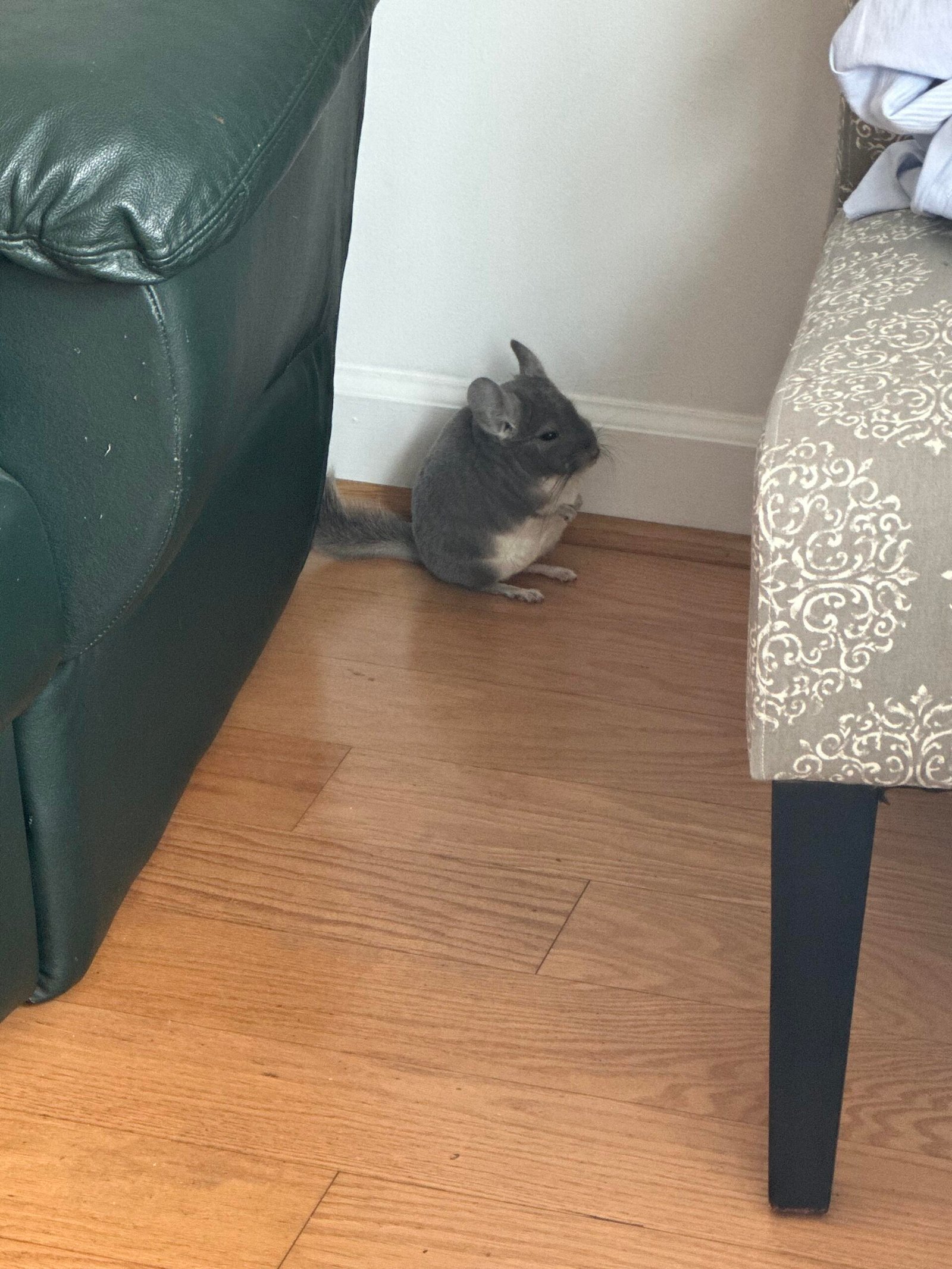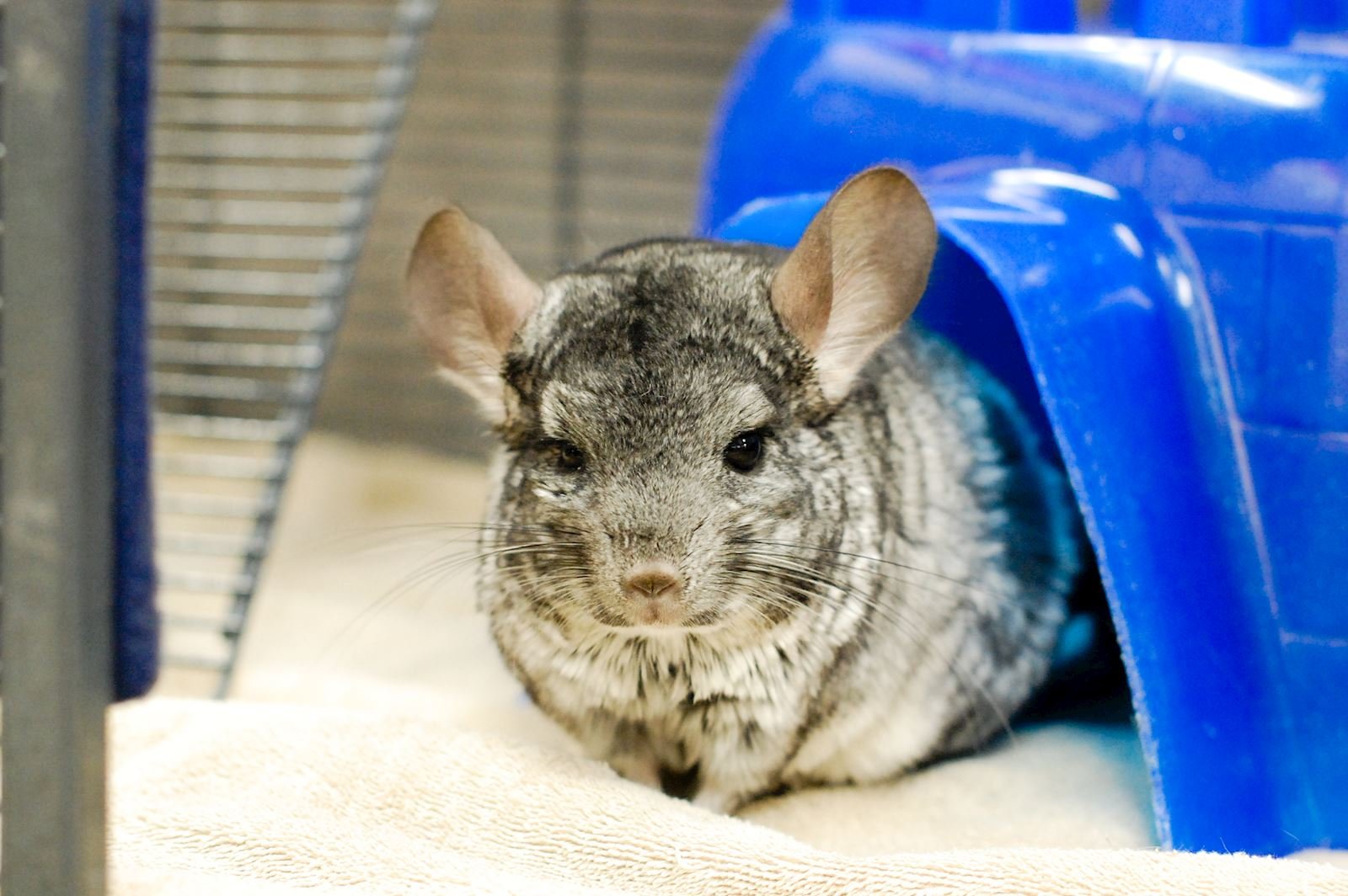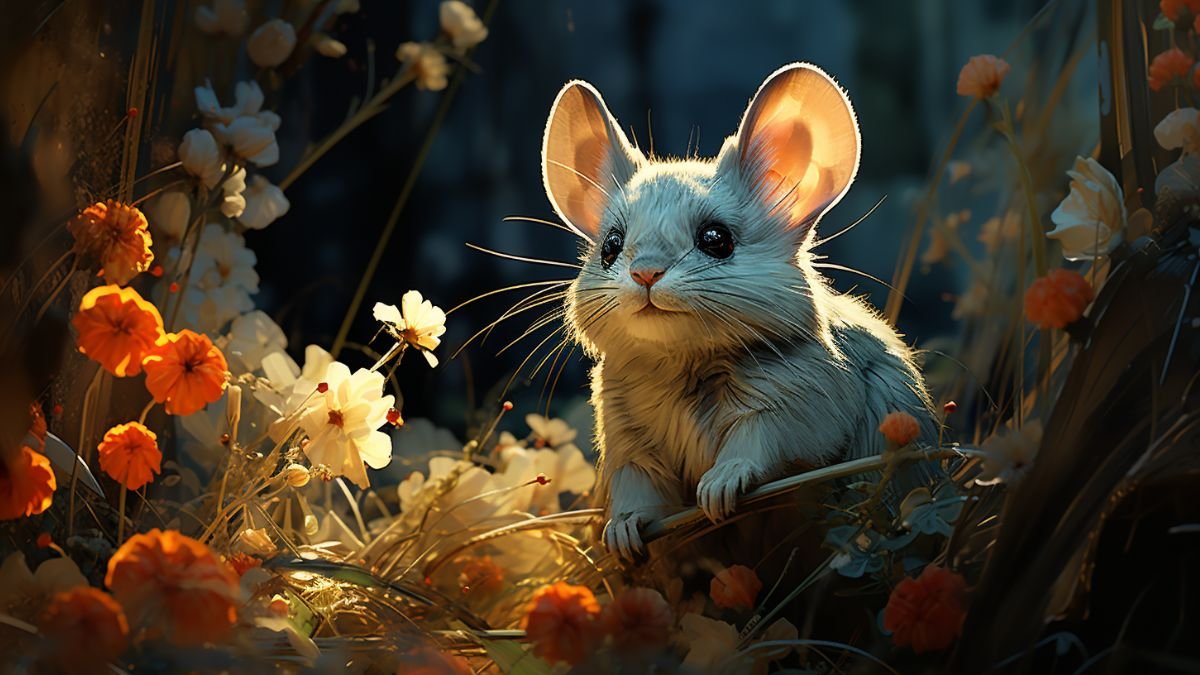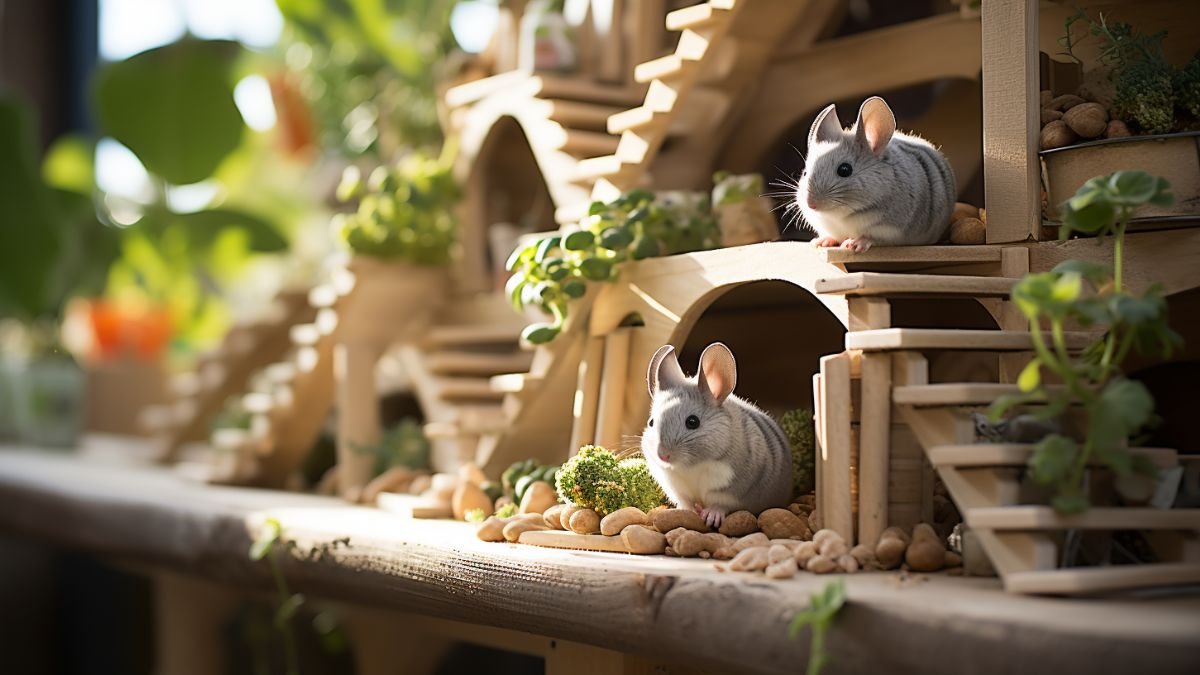
Are you struggling to calm your scared chinchilla? You’re not alone.
These tiny, fluffy pets can be shy and nervous at first. But with the right approach, you can build trust and help your chinchilla feel safe and comfortable around you. In this guide, you’ll discover simple, step-by-step methods to tame your scared chinchilla without stress or frustration.
Keep reading, and you’ll soon enjoy a happy, confident companion who loves your company.

Credit: www.wikihow.com
Preparing Your Home For A Chinchilla
Preparing your home for a chinchilla is the first step to help it feel safe and calm. Chinchillas are shy animals that need a quiet and secure place. Setting up the right environment shows you care and helps build trust. A good home setup makes taming easier and keeps your chinchilla happy.
Safe And Quiet Environment
Choose a calm spot away from loud noises and busy areas. Avoid places near TVs, speakers, or heavy foot traffic. Keep pets and children from disturbing your chinchilla. A peaceful space helps reduce stress and fear. Low light and soft sounds make your chinchilla feel safe.
Proper Cage Setup
Use a large cage with solid floors and multiple levels. Wire cages with small gaps prevent escapes and injuries. Add hiding spots like wooden houses or tunnels. Place the cage away from direct sunlight and drafts. Clean the cage regularly to keep it fresh and healthy.
Essential Supplies
Provide fresh water in a leak-proof bottle. Use dust-free bedding made for chinchillas. Offer chew toys to keep teeth healthy and busy. Include a dust bath for regular fur cleaning. Keep food fresh with high-quality pellets and hay nearby.
Building Trust Gradually
Building trust with a scared chinchilla takes time and patience. Trust is the key to a happy pet and a strong bond. It helps your chinchilla feel safe and relaxed. Each small step brings you closer to a friendly and calm pet.
Trust grows slowly. You must respect your chinchilla’s space and feelings. Let it get used to you at its own speed. This careful approach helps reduce fear and builds a lasting friendship.
Approaching Calmly
Always move slowly when near your chinchilla. Quick moves can startle it. Walk softly and avoid sudden gestures. Stand or sit near the cage quietly. Let your chinchilla notice you without feeling trapped.
Using Gentle Voice And Movements
Speak softly to your chinchilla. Loud or sharp sounds scare it easily. Use a calm and gentle voice. Keep your hands steady and slow. Slow, smooth movements show you are not a threat.
Observing Body Language
Watch your chinchilla’s signs closely. Ears back or wide eyes mean it feels scared. Relaxed posture means it is comfortable. Learn to read these signals well. Stop or slow down if your chinchilla shows stress.
Establishing A Routine
Establishing a routine is key to helping a scared chinchilla feel safe. Chinchillas thrive on predictability. They get less stressed when their day follows a clear pattern. A steady routine builds trust and comfort over time. It helps your chinchilla understand what to expect.
Start with small steps and keep things simple. Be patient and consistent. This section explains how to create a routine that works well for both you and your chinchilla.
Consistent Feeding Times
Feed your chinchilla at the same times daily. Regular feeding times create a sense of security. Your chinchilla will start to expect food and feel calm. Use quiet movements during feeding to avoid startling them. This consistency helps build a bond.
Regular Interaction Sessions
Set aside time each day to interact gently. Short, calm sessions are best. Use soft voices and slow movements. Let your chinchilla get used to your presence. Regular interaction reduces fear and builds trust slowly.
Creating A Predictable Environment
Keep the chinchilla’s space stable. Avoid changing the cage layout often. Make sure light and noise levels stay steady. A calm, quiet area helps your chinchilla relax. Predictability in their environment lowers stress and fear.

Credit: www.wikihow.pet
Handling Techniques
Handling a scared chinchilla takes patience and care. Gentle handling helps build trust. Use calm movements to avoid frightening your pet. Learning the right way to hold and touch them is key. This section explains simple handling techniques to help your chinchilla feel safe and relaxed.
Proper Way To Pick Up
Approach your chinchilla slowly and from the front. Let it see your hands before you touch. Place one hand under its chest and the other under its bottom. Lift gently and steadily. Avoid grabbing from above or the tail. This method keeps your chinchilla calm and secure.
Avoiding Startling Gestures
Move slowly around your chinchilla. Sudden movements can cause fear and stress. Speak softly to soothe your pet. Keep your hands steady and avoid quick reaching. Patience and calmness help your chinchilla trust you more. Let the chinchilla come to you when it feels ready.
Supporting Their Body
Always support the chinchilla’s whole body. Their bones are fragile and need care. Use both hands to hold them close. Support the back and legs gently but firmly. Avoid squeezing or holding too tight. Proper support makes your chinchilla feel safe and comfortable.
Positive Reinforcement
Positive reinforcement is a gentle way to build trust with your scared chinchilla. It helps your pet feel safe and loved. This method uses rewards to encourage good behavior. Over time, your chinchilla will learn to stay calm and enjoy your company.
Using treats is one of the best rewards. Treats show your chinchilla that calm behavior brings something nice. Patience and consistency are key. Little by little, your chinchilla will respond to your kindness.
Using Treats Effectively
Pick healthy, small treats your chinchilla likes. Offer treats only after your chinchilla stays calm. Hold the treat close, so your pet can see it. Give the treat slowly to avoid startling your chinchilla. Repeat this often to build a positive connection.
Rewarding Calm Behavior
Notice when your chinchilla is calm or curious. Give a gentle voice or a soft pet as a reward. Use treats to praise quiet moments. Avoid sudden moves that might scare your chinchilla. Calm behavior should always lead to a positive reward.
Encouraging Exploration
Create a safe space for your chinchilla to explore. Use treats to guide your pet into new areas. Let your chinchilla take small steps at its own speed. Celebrate each new discovery with a reward. Exploration helps build confidence and reduces fear.
Managing Stress And Fear
Managing stress and fear is key to helping a scared chinchilla feel safe. Stress can make your pet hide or freeze. Fear can stop it from trusting you. Creating a calm space helps your chinchilla relax. Understanding its needs lowers anxiety. This section shows simple ways to reduce fear and stress.
Recognizing Stress Signs
Watch for changes in behavior. Your chinchilla may stop eating or grooming. It might hide more than usual. Shaking or teeth grinding are clear signs. Rapid breathing or wide eyes show fear. Noticing these signs early helps you act fast. Responding quickly can prevent bigger problems.
Providing Safe Hiding Spots
Chinchillas feel safe with places to hide. Offer tunnels, boxes, or small shelters. These spots give a sense of security. Place hiding spots in quiet parts of the cage. Avoid moving them often to keep the area familiar. Safe spots help your chinchilla relax and explore.
Reducing Loud Noises
Loud sounds scare chinchillas easily. Keep their area quiet and calm. Avoid sudden noises from TVs or voices. Soft background noise works better than silence. Use rugs or curtains to absorb sounds. A quiet space helps your chinchilla feel safe and less stressed.
Interactive Play And Bonding
Interactive play and bonding are key to calming a scared chinchilla. These moments help build trust and make your pet feel safe. Spending time together shows your chinchilla you are friendly. It also provides mental and physical activity, which chinchillas need to stay happy. Simple steps can create a strong bond over time.
Toys That Encourage Interaction
Choose toys that invite your chinchilla to explore. Wooden chew toys help keep teeth healthy and reduce stress. Hanging balls or puzzles can catch their attention. Toys that move or make soft sounds encourage curiosity. Avoid plastic or noisy toys that might scare them.
Gentle Play Sessions
Keep play sessions short and calm. Sit quietly near your chinchilla and offer a treat. Use soft hands to gently pet or stroke their fur. Let your chinchilla come to you instead of chasing it. Repeat these sessions daily to build comfort and trust.
Building Emotional Connection
Talk softly to your chinchilla during quiet moments. Your voice can soothe and calm their nerves. Watch their body language for signs of comfort or fear. Respect their space and avoid sudden movements. Patience and kindness help create a lasting emotional bond.
Common Challenges And Solutions
Taming a scared chinchilla can bring many challenges. Each chinchilla reacts differently to fear and stress. Understanding these common problems helps you build trust faster. Knowing the right solutions keeps your pet calm and safe. Patience and gentle care make a big difference in your chinchilla’s behavior.
Dealing With Biting
Biting is a common fear response in chinchillas. It usually happens when they feel threatened or scared. Never punish a biting chinchilla. Instead, stay calm and avoid sudden movements. Offer treats to create positive associations. Use soft, slow hand movements during handling. Over time, your chinchilla will learn you mean no harm.
Handling Sudden Flight Responses
Chinchillas may suddenly run or jump away when frightened. This flight response is natural. Do not chase or grab them quickly. Instead, stay still and speak softly. Allow your chinchilla to calm down on its own. Create a safe, quiet environment to reduce stress. Regular gentle interaction helps lessen sudden scares.
When To Seek Professional Advice
Some chinchillas show extreme fear or aggressive behavior. If your pet bites often or hides constantly, consult a vet or animal behaviorist. Professionals can identify health issues or stress causes. They provide tips tailored for your chinchilla’s needs. Early advice can prevent long-term problems and improve your pet’s well-being.
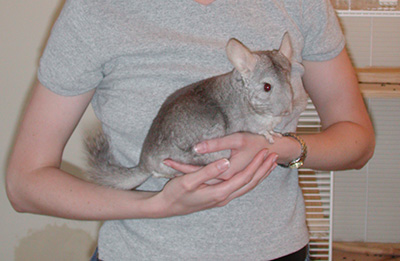
Credit: infolific.com
Frequently Asked Questions
How Long Does It Take To Tame A Scared Chinchilla?
Taming a scared chinchilla usually takes several weeks. Patience and consistent gentle handling are key. Daily, calm interaction helps build trust gradually. Avoid sudden movements or loud noises. Progress varies depending on the chinchilla’s personality and past experiences.
What Is The Best Environment For Taming Chinchillas?
A quiet, safe, and comfortable space is ideal. Ensure the cage is spacious with hiding spots. Keep noise and disruptions minimal. Provide fresh water and proper food. A stress-free environment encourages a chinchilla to feel secure and open to taming.
How Often Should I Handle A Scared Chinchilla?
Handle your chinchilla gently every day for short periods. Consistency helps build trust and reduces fear. Start with just a few minutes and gradually increase time. Avoid forcing interaction; let your chinchilla set the pace. Regular handling promotes bonding and taming success.
What Treats Help In Taming A Scared Chinchilla?
Healthy treats like dried rose hips, plain oats, or small pieces of apple work well. Use treats to reward calm behavior and encourage trust. Avoid sugary or fatty snacks. Treats should complement a balanced chinchilla diet and never replace regular food.
Conclusion
Taming a scared chinchilla takes time and gentle care. Patience helps build trust between you and your pet. Speak softly and move slowly around them. Offer treats to encourage positive feelings. Create a calm, safe environment for your chinchilla. Small steps lead to big improvements.
Enjoy watching your chinchilla grow more comfortable every day. Remember, kindness and consistency bring the best results. Your chinchilla will soon feel happy and secure with you. Keep practicing these simple steps for lasting bond.

